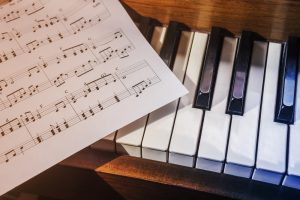Table of Contents
Come join us now, and enjoy playing your beloved music and browse through great scores of every level and styles!
Can’t find the songbook you’re looking for? Please, email us at: sheetmusiclibrarypdf@gmail.com We’d like to help you!
Sorabji: In the Hothouse (from Two Piano Pieces) sheet music, Noten, partitura, spartiti 楽譜

Best Sheet Music download from our Library.
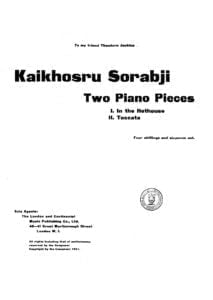
Please, subscribe to our Library.
If you are already a subscriber, please, check our NEW SCORES’ page every month for new sheet music. THANK YOU!
Browse in the Library:
Or browse in the categories menus & download the Library Catalog PDF:
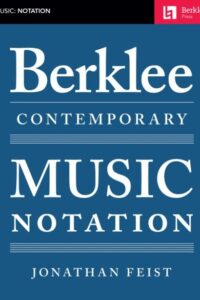
Who was Sorabji?
Kaikhosru Shapurji Sorabji: The Hermit of Modernist Maximalism
In the often-crowded pantheon of 20th-century composers, Kaikhosru Shapurji Sorabji (1892-1988) occupies a unique and enigmatic niche. A composer of staggering ambition, labyrinthine complexity, and self-imposed isolation, Sorabji crafted some of the most monumental, technically demanding, and stylistically idiosyncratic music ever conceived. His work, largely ignored during his lifetime and still challenging audiences today, represents a singular path through modernism – one defined by maximalism, intricate ornamentation, transcendental virtuosity, and a fierce, almost hermetic, independence.

Biography: A Self-Forged Identity
- Birth & Heritage: Born Leon Dudley Sorabji on August 14, 1892, in Chingford, Essex, England. His father was a Parsi engineer from India (thus the Persian-derived name Sorabji), and his mother was English-Spanish. This mixed heritage profoundly shaped his sense of identity, though he felt alienated from both cultures.
- The Name: Around 1914, he legally changed his name to Kaikhosru Shapurji Sorabji. “Kaikhosru” and “Shapurji” were Persian names chosen for their resonance and connection to ancient Persian history and Zoroastrianism, reflecting his deliberate construction of a unique persona.
- Musical Formation: Largely self-taught. He received some piano lessons in his youth but had no formal composition training. His musical education came through voracious listening, score study (especially Bach, Liszt, Busoni, Debussy, Ravel, Scriabin, Szymanowski, Medtner), and wide reading in literature, philosophy, and the occult.
- Early Career & Criticism: Worked as a music critic (under the pseudonym “S. Godfrey”) for outlets like The New Age and The New English Weekly from the 1910s to the 1930s. His critiques were famously acerbic, insightful, and often scathing, particularly targeting English musical provincialism and composers he deemed mediocre (which was most of them).
- The Recluse: Deeply disillusioned by the musical establishment and critical reception to his early performances (which were rare and often controversial), Sorabji gradually withdrew from public musical life starting in the late 1930s. After his mother’s death in 1940, he retreated almost completely to his secluded home “The Eye” in Corfe Castle, Dorset, where he lived with his companion, Reginald Norman Best, until his death. He forbade performances of his music for decades.
- The Ban Lifted: In 1976, pressured by a growing underground interest spearheaded by pianists like Yonty Solomon and Alistair Hinton (who later became his literary executor), Sorabji reluctantly lifted the ban on performances, provided he approved the performer.
- Death: Sorabji died on October 15, 1988, in Winfrith Newburgh, Dorset, leaving behind a colossal legacy of unpublished manuscripts.
Works: Monuments of Sound

Sorabji’s output is vast and overwhelmingly dominated by solo piano music, though he also composed orchestral works, chamber music, organ symphonies, and songs. His works are renowned for their extreme length, density, and technical difficulty, pushing the boundaries of playability.
- Key Masterpieces:
- Opus Clavicembalisticum (1930): His most famous (or infamous) work. A colossal 4+ hour piano epic in 12 movements (including fugues, passacaglias, toccatas, cadenzas), often considered one of the most challenging solo piano works ever written. A summit of contrapuntal complexity and virtuosic display.
- Symphonic Variations for Piano (1935-37): Another monumental work, exploring vast variation forms over an extended duration.
- Sequentia Cyclica super “Dies iræ” ex Missa pro Defunctis (1948-49): A massive cycle of 27 variations on the “Dies Irae” chant, demonstrating his intricate contrapuntal and transformative skills.
- 100 Transcendental Studies (1940-44): True to their name, these studies explore extreme technical and expressive demands far beyond those of Liszt or Chopin.
- Symphonies for Solo Piano: Several exist, including his Symphony No. 2 (“Jāmī”), blending orchestral textures and scope onto the piano.
- Gulistān – Nocturne for Piano (1940): A prime example of his lush, perfumed, and incredibly intricate “Persian”-inspired style.
- Concerti: He wrote several for solo piano and orchestra (e.g., Concerto per suonare da me solo e senza orchestra, per divertirsi), which are symphonic in scale and require superhuman virtuosity.
- Symphonies for Organ: Vast, complex works exploring the sonic possibilities of the instrument.
Analysis of Style: A Universe of Complexity
Sorabji’s style is instantly recognizable yet difficult to categorize. It synthesizes diverse elements into a unique and overwhelming whole:
- Maximalism: This is the defining characteristic. Sorabji embraced extremes:
- Length: Works lasting several hours are common.
- Density: Highly polyphonic textures, often with multiple independent melodic lines woven together in complex counterpoint (influenced by Bach, Busoni).
- Virtuosity: Demands transcendental technique – cascades of notes, complex polyrhythms, wide leaps, immense power, and extreme delicacy. He wrote as if the pianist had four hands.
- Ornamentation: Baroque-like ornamentation (trills, mordents, turns, grace notes) is ubiquitous, often layered and integral to the texture, creating shimmering, kaleidoscopic surfaces (influenced by Scriabin, Szymanowski, Middle Eastern/Persian music).
- Dynamic Range: From barely audible whispers to thunderous, percussive climaxes.
- Harmony: A complex fusion:
- Rooted in late-Romantic chromaticism (Scriabin, Szymanowski, early Schoenberg).
- Freely employed dissonance, clusters, and intricate chord structures.
- Often retained a sense of tonal centers or polarity, even amidst dense chromaticism (unlike strict atonality).
- Incorporated modal inflections, sometimes evoking Persian or Spanish flavors.
- Rhythm: Highly complex and fluid:
- Frequent use of polyrhythms (multiple simultaneous rhythms), cross-rhythms, and nested tuplets (triplets within quintuplets, etc.).
- Tempo often fluctuates wildly, requiring immense control.
- A sense of improvisatory freedom within highly structured forms.
- Form: Often large-scale, complex, and idiosyncratic:
- Favored variations (passacaglias, chaconnes), fugues, toccatas, and intricate multi-movement structures (like the Opus Clavicembalisticum).
- Forms were often expansive and cumulative, building through layered repetition and intensification rather than traditional development.
- Architecture was paramount, even in the densest textures.
- Influences (Assimilated, Not Imitated):
- Ferruccio Busoni: The most profound influence. Busoni’s ideas of “Young Classicism,” the transcendental potential of the piano, the fusion of Bachian counterpoint with modern harmony, and the concept of “Junge Klassizität” resonated deeply. Sorabji dedicated his Opus Clavicembalisticum to Busoni’s memory.
- Franz Liszt: Virtuosity, thematic transformation, large-scale forms, and the symphonic poem concept translated to piano.
- J.S. Bach: Contrapuntal mastery, structural rigor, and the use of forms like fugue and passacaglia.
- Alexander Scriabin: Mysticism, harmonic language, dense textures, and ecstatic climaxes.
- Karol Szymanowski: Sensuous harmony, intricate ornamentation (especially in the “Persian” inspired works like Métopes and Masques), and voluptuous textures.
- Debussy & Ravel: Color, texture, exoticism, and pianistic refinement.
- Mediterranean & Persian Cultures: While not authentically recreating these styles, he evoked their essence through ornamentation, melodic turns, and titles (Gulistān, Jāmī), reflecting his fascination with his Persian heritage and the wider Orient.
- Aesthetic: Sorabji’s music aimed for:
- Transcendence: Pushing beyond perceived limits of instrument, performer, and listener.
- Luxuriance & Opulence: A rich, sensual, almost decadent sound world.
- Intellectual Rigor: Underlying the sensual surface was meticulous structural planning.
- Individualism: A complete rejection of prevailing trends (serialism, neoclassicism, minimalism) in favor of his own uncompromising vision.
Legacy: From Obscurity to Cult Status
Sorabji’s legacy is complex and evolving:
- Decades of Neglect: His self-imposed exile and performance ban meant his music was virtually unknown outside a tiny circle for nearly 40 years. Manuscripts were inaccessible, unplayable, and unpublished.
- The Pioneers (1970s-): The lifting of the ban sparked interest. Pianists like Yonty Solomon, Michael Habermann, Geoffrey Douglas Madge (who made the first complete recording of Opus Clavicembalisticum in 1977), and later Marc-André Hamelin, Jonathan Powell, Fredrik Ullén, and Ronald Stevenson began the monumental task of learning, performing, and recording his works. This required immense dedication and technical prowess.
- Publication & Scholarship: The Sorabji Archive, established by Alistair Hinton (Sorabji’s literary executor), has been crucial in cataloging, editing, and facilitating the publication of scores (primarily by Dover Publications and The Sorabji Music Archive). Scholarly work is gradually increasing.
- Recordings Renaissance: The CD era and digital distribution (YouTube, streaming) have been transformative. Dedicated labels (Altarus, BIS, Toccata Classics, Piano Classics) have released numerous recordings, making this once-inaccessible music available globally. Complete cycles of the 100 Studies and other major works are underway.
- The Cult & The Challenge: Sorabji remains a “composer’s composer” and a cult figure. His music is not mainstream concert fare due to its extreme demands and duration. However, it commands deep respect and fascination among pianists, composers, and listeners drawn to its unique sound world and uncompromising vision. He is seen as the ultimate iconoclast, forging a path utterly independent of 20th-century musical fashions.
- Influence: His direct influence on other composers is hard to pinpoint due to his obscurity, but he stands as a powerful symbol of uncompromising artistic integrity and the exploration of extreme complexity and virtuosity. Composers interested in maximalism, intricate counterpoint, or pushing pianistic limits inevitably encounter his shadow.
- Copyright Controversy: The complex copyright status of his works (involving the Sorabji Archive and publishers) has sometimes been a point of friction within the community of performers and scholars seeking access.
Sorabji: The Solitary Giant
Kaikhosru Shapurji Sorabji was a true original. He inhabited a musical universe entirely of his own making, synthesizing diverse influences into a style characterized by unparalleled complexity, sensuous opulence, and transcendental ambition. His deliberate withdrawal from the world ensured decades of obscurity, but the dedication of pioneering performers and the power of recording technology have brought his extraordinary soundscapes to light. While his music remains challenging and demanding, it offers unparalleled rewards: a journey into a world of labyrinthine beauty, overwhelming power, and intellectual fascination. Sorabji stands as a testament to the power of an utterly individual artistic vision, uncompromising in its scope and ambition, a solitary giant whose monumental creations continue to challenge and inspire. He redefined the possible for the piano and left a legacy that continues to unfold as more performers dare to scale his musical Himalayas.
“In the Hothouse” is one of Sorabji’s most evocative and frequently performed works, serving as a perfect entry point into his dense, sensuous sound world. Here’s a detailed look at this fascinating piece:
Context: Two Piano Pieces (1918)
- Composed: 1918 (early in Sorabji’s career, age 26).
- Publication: First published in 1920, making it one of the earliest Sorabji works available in print.
- The Pair: “In the Hothouse” is paired with “Toccata” – a contrasting, hyper-virtuosic, and structurally complex piece showing his Busoni/Liszt influences. “In the Hothouse” offers the sensual, atmospheric counterpoint.
- Significance: Represents Sorabji’s early mastery of texture, harmony, and evocative atmosphere. It predates his gargantuan works but already displays his unique voice.
“In the Hothouse”: A Sensory Immersion
- Title & Imagery: The title instantly conjures an environment: humid, lush, teeming with exotic, overripe plant life, heavy perfumes, and stifling, enclosed heat. Sorabji translates this sensory overload into sound.
- Form & Structure: Relatively free and rhapsodic. It unfolds as a continuous, organic stream of consciousness rather than adhering to strict classical forms. Think of it as an elaborate, decadent arabesque.
- Style & Character:
- Extreme Sensuality: This is the defining feature. The music drips with lush, complex harmonies and suffocatingly rich textures.
- Harmony: Deeply chromatic, rooted in late Scriabin and early Szymanowski. Expect dense, constantly shifting chords: augmented harmonies, whole-tone inflections, unresolved dissonances creating tension, and sudden moments of surprising consonance like shafts of light piercing foliage. It avoids traditional tonality but gravitates around implied centers.
- Texture: Thick, layered, and constantly in motion. Tremolos, trills, rapid filigree (ornamental passages), and cascading arpeggios create a shimmering, humid haze. Melodies are often embedded within this dense undergrowth rather than standing clearly apart. The writing often requires the pianist to sustain multiple layers simultaneously.
- Rhythm: Fluid and flexible, often obscured by the sheer density of notes and ornamentation. Rubato (expressive tempo fluctuations) is essential. While less overtly complex polyrhythmically than his later works, the rhythmic flow feels organic and improvisatory.
- Dynamics & Articulation: Wide dynamic range, often shifting suddenly between extremes (e.g., thunderous climaxes collapsing into fragile whispers). Articulation varies from sharp staccatos to legatissimo passages that blur together. Pedaling is crucial for sustaining the harmonic haze and creating resonance.
- Ornamentation: Quintessential early Sorabji. Trills, mordents, turns, and grace notes are not mere decoration; they are the texture, creating constant flickering movement and contributing to the claustrophobic, teeming atmosphere. This foreshadows the intricate ornamentation dominating his mature style.
- Emotional Landscape: Evokes opulence, decadence, languor, mystery, stifling heat, hidden dangers, and overwhelming sensory stimulation. There’s a sense of beauty bordering on the grotesque due to its sheer intensity.
Influences Audible in “In the Hothouse”
- Scriabin (Primary): The harmonic language (mystic chords, unresolved dissonance, ecstatic climaxes), the sensual atmosphere, and the use of trills/tremolos are deeply indebted to Scriabin’s late sonatas and poems (e.g., Vers la flamme). Sorabji pushes Scriabin’s decadence further.
- Szymanowski: The opulent textures, perfumed harmonies, and “orientalist” exoticism (though abstracted here) strongly recall Szymanowski’s “Métopes” or “Masques,” which Sorabji admired deeply.
- Debussy: The focus on atmosphere, texture, and harmonic color (whole-tone scales, parallel chords) shows Debussy’s influence, though rendered with far greater density and intensity.
- Ravel: The virtuosic filigree and lush harmonies (think “Gaspard de la Nuit,” especially “Ondine” or “Le gibet”) are a touchstone, again amplified.
- Liszt: The rhapsodic freedom and dramatic gestures hint at Liszt, though filtered through a post-Scriabinesque lens.
Performance Challenges
- Texture & Balance: Maintaining clarity amidst the dense, rapidly shifting textures is paramount. The pianist must carefully voice chords and layers to prevent muddiness while sustaining the essential harmonic haze.
- Ornamentation as Texture: Executing the constant ornamentation smoothly and evenly, integrating it into the melodic and harmonic flow rather than treating it as mere decoration.
- Dynamic Control: Navigating the extreme dynamic contrasts and sudden shifts without sounding jarring. Creating a true pianissimo shimmer within complexity is incredibly difficult.
- Rubato & Phrasing: Applying expressive tempo fluctuations naturally while maintaining the overall structural coherence and forward momentum of the rhapsodic form.
- Pedaling: Using the pedal to create resonance and blend without causing harmonic blurring or loss of rhythmic definition. Requires exceptional sensitivity.
- Stamina & Focus: While shorter than his later works (typically 12-15 minutes), the piece demands intense concentration and physical control to sustain the atmosphere and navigate the technical intricacies.
Legacy & Significance of “In the Hothouse”
- Accessibility: It remains one of Sorabji’s most “accessible” works due to its evocative title, relatively shorter duration, and concentrated expression. It’s a frequent choice for pianists introducing audiences to Sorabji.
- Blueprint: It serves as a crucial blueprint for Sorabji’s mature style, showcasing his core preoccupations: sensuality, harmonic density, intricate ornamentation as texture, and atmospheric evocation, all present in embryonic form.
- Performance History: Despite Sorabji’s later ban, “In the Hothouse” (along with the Toccata) was one of the few pieces occasionally performed during his lifetime (e.g., by Sorabji himself and pianist Reginald Paul) and became a key work for the pioneering generation post-1976 (Yonty Solomon, Michael Habermann, Marc-André Hamelin, Jonathan Powell, Fredrik Ullén).
- Gateway Piece: It functions as a vital “gateway drug” into Sorabji’s world. Its success in conveying its intense atmosphere often encourages listeners to explore his more monumental, complex works.
- Standalone Masterpiece: Regardless of its role as an introduction, it stands as a perfectly formed and powerful piece of early modernist piano writing, a miniature tone poem of extraordinary evocative power.
“In the Hothouse” is a sun-drenched, overripe, and intoxicating immersion into Sorabji’s unique aesthetic. It captures the essence of his sensual maximalism in a concentrated dose, showcasing his debt to Scriabin and Szymanowski while asserting his own distinct voice. Its evocative power, technical brilliance, and relative brevity ensure its enduring place as one of his most beloved and frequently performed works, offering a compelling glimpse into the hothouse of Sorabji’s extraordinary musical imagination.
| Artist or Composer / Score name | Cover | List of Contents |
|---|---|---|
| Ennio Morricone – Love Affair theme | Ennio Morricone – Love Affair theme | |
| Ennio Morricone – Once upon a time in the West – C’era Una Volta Il West | Morricone Once upon a time in the West | |
| Ennio Morricone – Once Upon A Time In The West – C’era Una Volta Il West (piano solo) | Ennio Morricone – Once Upon A Time In The West – C’era Una Volta Il West (piano solo) | |
| Ennio Morricone – Roger Waters Lost Boys Calling (From The Legend Of 1900) Complete |
|
|
| Ennio Morricone – Roger Waters Lost Boys Calling (From The Legend Of 1900) Complete (Musescore File).mscz | ||
| Ennio Morricone – Roger Waters Lost Boys Calling (From The Legend Of 1900) Guitar (Musescore File).mscz | ||
| Ennio Morricone – The best of 1970 piano sheet music songbook |
|
Ennio Morricone – The best of 1970 piano sheet music songbook |
| Ennio Morricone – The Book (best scores selection for piano) | Ennio Morricone – The Book (best scores selection for piano) | |
| Ennio Morricone A Mozart Reincarnated |
 |
|
| Ennio Morricone and Andrea Morricone Cinema Paradiso Piano Solo |
|
|
| Ennio Morricone For A Few Dollars More Guitar |
|
|
| Ennio Morricone For Band Partitura arr. Loreto Perrini | Ennio Morricone For Band Partitura arr. Loreto Perrini | |
| Ennio Morricone For Guitar TABs (arr. by Carlo Marchione) |
|
Ennio Morricone For Guitar TABs (arr. by Carlo Marchione) contents |
| Ennio Morricone Giu La Testa Duck You Sucker! Once Upon A Time The Revolution |
|
|
| Ennio Morricone Il Principe Del Deserto | Ennio Morricone Il Principe Del Deserto | |
| Ennio Morricone In His Own Words (Alessandro De Rosa) Book |
|
|
| Ennio Morricone Inseguendo Quel Suono (Alessandro De Rosa Ennio Morricone) Book (Italian) |
|
|
| Ennio Morricone La Califfa (Piano Solo arr. sheet music) |
|
|
| Ennio Morricone Magic Waltz from the Legend of 1900 Piano Solo |
|
|
| Ennio Morricone Moment For Morricone for band arr. Johan De Mey |
|
|
| Ennio Morricone Once upon a time in Amercia (Il Etait Une Fois En Amerique) Deborah’s Theme | Morricone Il Etait Une Fois En Amérique – Deborah’s Theme sample | |
| Ennio Morricone Playing Love | Ennio Morricone – Playing Love | |
| Ennio Morricone The Best Of – Original Soundtrack Collection – Volume 1 |
|
Ennio Morricone – The Best Of – Original Soundtrack Collection – Volume 1 |
| Ennio Morricone The Best Of – Original Soundtrack Collection – Volume 2 |
|
Ennio Morricone – The Best Of – Original Soundtrack Collection – Volume 2 |
| Ennio Morricone The Best Of – Original Soundtrack Collection – Volume 3 |
|
Ennio Morricone – The Best Of – Original Soundtrack Collection – Volume 3 |
| Ennio Morricone The Good, The Bad and The Ugly (Il Buono, Il Brutto, Il Cattivo) Piano Solo |
|
|
| Ennio Morricone The Legend Of 1900 – (Complete) |
|
Ennio Morricone -The Legend Of 1900 |
| Ennio Morricone The Mission (full Book) |
|
Ennio Morricone – The Mission (Book) |
| Ennio Morricone- The Good The Bad And The Ugly (Musescore File).mscz | ||
| Enrico Rava Sand C Bb Eb Trumpet |
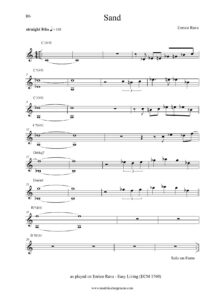 |
|
| Enrique Iglesias – Bailamos | ||
| Enrique Iglesias – Maybe | ||
| Enriqueiglesias – Hero | ||
| Enya – 20 Favourites Arranged For Piano (songbook) |
 |
Enya – 20 Favourites Arranged For Piano (songbook) |
| Enya – A day without Rainn (full album sheet music) | ENYA SHEET MUSIC | |
| Enya – Caribbean Blue | ||
| Enya – Evening Falls | Enya – evening falls | |
| Enya – Floras secret | Enya – floras secret | |
| Enya – Midnight Blue | ||
| Enya – Only Time | Enya – only time | |
| Enya – Only Time (piano solo sheet music) Musescore File.mscz | ||
| Enya – Shepherd Moons (full album sheet music) |
 |
|
| Enya – Silver Inches | Enya – Silver Inches | |
| Enya – Storms in Africa | ENYA Storms in africa | |
| Enya – Tea House Moon | ||
| Enya – The memory of Trees (full album sheet music) |
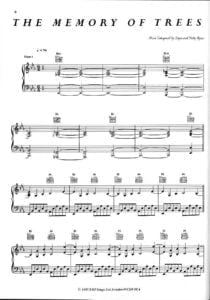 |
|
| Enya – Watermark (full album sheet music) | ENYA WATERMARK SHEET MUSIC | |
| Enya – Wild Child | ||
| Enya -Tea house Moon |
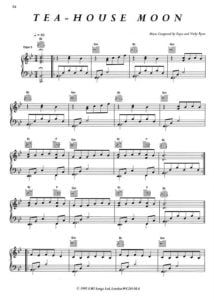 |
|
| Enya Amarantine Songbook |
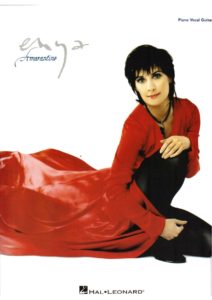 |
Enya Amarantine Songbook |
| Enya And Winter Came Piano Vocal Songbook |
 |
ENYA And Winter Came… |
| Enya Book of days sheet music |
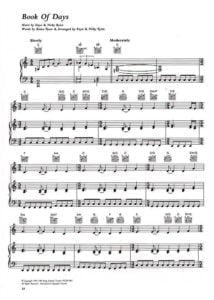 |
|
| Enya Caribbean Blue (Piano Solo) | Enya Caribbean Blue (Piano Solo) | |
| ENYA May It Be |
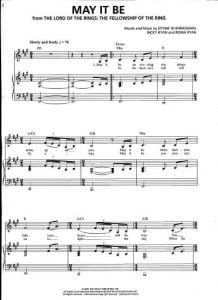 |
|
| Enya May It Be Piano Vocal from Lord Of The Rings The Fellowship Of The Ring |
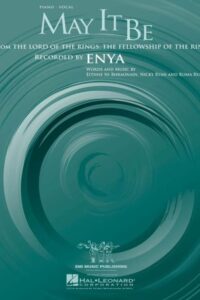 |
|
| ENYA Midnight Blue | ||
| Enya Only Time Piano Vocal Guitar |
 |
|
| Enya Songbook The Best Of Easy Piano Series |
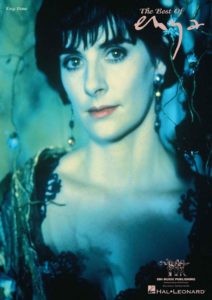 |
Enya Songbook The Best Of Easy Piano Series |
| Enya The Memory Of Trees Songbook Piano Vocal Guitar |
 |
Enya The Memory Of Trees Songbook Piano Vocal Guitar |
| Epic Movie Adventures For Easy Piano |
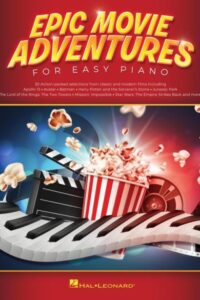 |
Epic Movie Adventures For Easy Piano |
| Equation (Le Petit Prince OST) Camille – Hans Zimmer | ||
| Eric Carmen All By Myself As Performed By Celine Dion (sheet music) | Eric Carmen All By Myself As Performed By Celine Dion (sheet music) | |
| Eric Carmen – All By Myself Piano Solo sheet music |
 |
|
| Eric Carmen All By Myself (solo piano) | Eric Carmen All By Myself | |
| Eric Carmen All By Myself Words And Music |
 |
|
| Eric Carmen Hungry Eyes Piano Vocal Chords from Dirty Dancing | Eric Carmen Hungry Eyes Piano Vocal Chords from Dirty Dancing | |
| Eric Christian von Fricken Nocturne D Flat Major “un rêve” |
 |
|
| Eric Clapton – Tears In Heaven (Guitar And Volin) (Musescore File).mscz | ||
| Eric Clapton – Layla | ||
| Eric Clapton – Play Acoustic Guitar with Six of his greatest Hits [Book + AUDIO MP3] with Tablature |
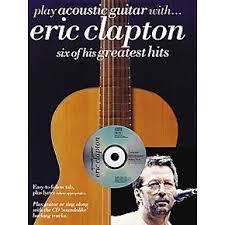 |
Eric Clapton – Play Acoustic Guitar With six of his greatest hits [Book + AUDIO MP3] with Tablature— Clapton acoustic guitar |
| Eric Clapton – Tears in Heaven (easy piano solo) | Eric Clapton – Tears In Heaven | |
| Eric Clapton – Tears in heaven (piano & guitar chords) | Tears in Heaven | |
| Eric Clapton – The Best Of (Guitar Songbook) with Tablature |
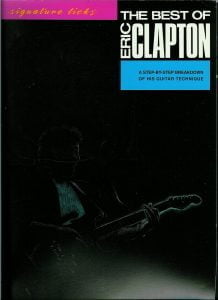 |
Eric Clapton best of |
| Eric Clapton – The Cream Of Clapton |
 |
Eric Clapton – The Cream Of Clapton |
| Eric Clapton – Wonderful Tonight | Eric Clapton – Wonderful Tonight | |
| Eric Clapton – Wonderful Tonight Sheet Music |
 |
|
| Eric Clapton (Guitar Songbook) – Eric Clapton sheet music |
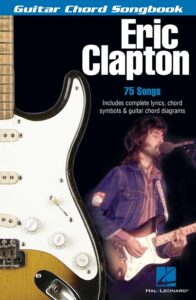 |
Eric Clapton (Guitar Songbook) – Eric Clapton sheet music |
| Eric Clapton 461 Ocean Boulevard (Eric Clapton) Guitar Tablature |
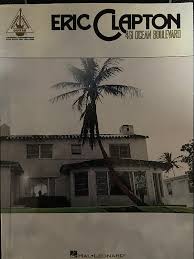 |
Eric Clapton 461 Ocean Boulevard (Eric Clapton) Guitar Tablature |
| Eric Clapton Anthology Guitar Tablature |
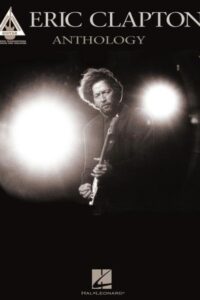 |
Eric Clapton Anthology Guitar Tablature |
| Eric Clapton Autumn Leaves for Violin and Piano (Easy) | Eric Clapton Autumn Leaves for Violin and Piano (Easy) | |
| Eric Clapton Complete Clapton Guitar TABs Recorded versions with Tablature |
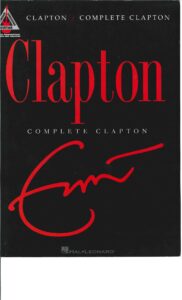 |
Eric Clapton Complete Clapton (Guitar TABs Recorded Versions) |
| Eric Clapton Eric La Autobiografia (Español Spanish) Book |
 |
|
| Eric Clapton From The Cradle Guitar Tab Songbook with Tablature |
 |
Eric Clapton From The Cradle Guitar Tab Songbook with Tablature |
| Eric Clapton Guitar Play Along (with embedded audio MP3) with Tablature |
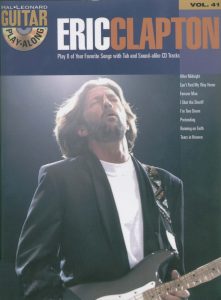 |
Guitar Play Along – Eric Clapton II |
| Eric Clapton Happy Xmas Piano Vocal Guitar |
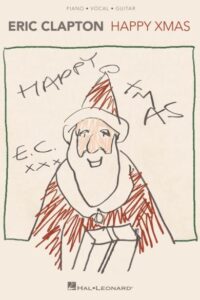 |
Eric Clapton Happy Xmas Piano Vocal Guitar |
| Eric Clapton Journeyman Scores |
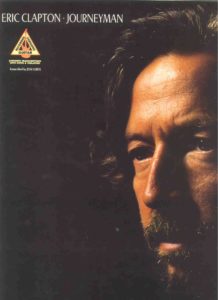 |
Eric Clapton Journeyman Scores |
| Eric Clapton Me And Mr Johnson Guitar with Tablature |
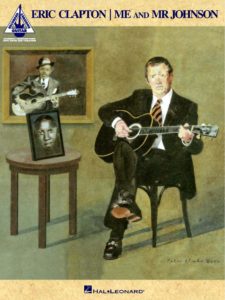 |
Eric Clapton Me And Mr Johnson Guitar |
| Eric Clapton Rock Score |
 |
|
| Eric Clapton Sheet Music Anthology – Eric Clapton |
 |
Eric Clapton Sheet Music Anthology – Eric Clapton |
| Eric Clapton Slowhand (Guitar with Tablature) |
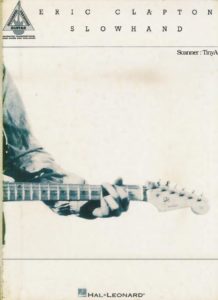 |
Eric Clapton Slowhand |
| Eric Clapton Tears In Heaven (Piano Solo) (Musescore File).mscz | ||
| Eric Clapton Tears in Heaven guitar TABs | Eric Clapton Tears in Heaven guitar TABs | |
| Eric Clapton The Autobiography Eric Clapton Book |
 |
|
| Eric Clapton The Essential Eric Clapton Easy Guitar With Riffs And Solos with Tablature |
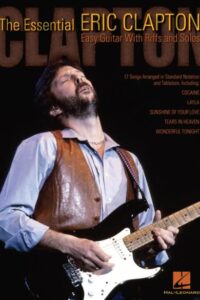 |
Eric Clapton The Essential Eric Clapton Easy Guitar With Riffs And Solos |
| Eric Clapton Unplugged Guitar TAB Songbook (signature licks) transcribed by Jesse Gress |
 |
Eric Clapton Unplugged Guitar TAB Songbook (signature licks) transcribed by Jesse Gress |
| Eric Clapton Wonderful Tonight Piano Vocal Guitar |
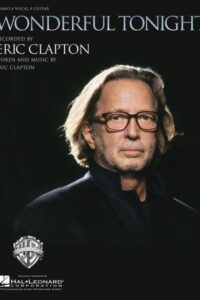 |
|
| Eric Clapton Wonderful Tonight piano solo arr |
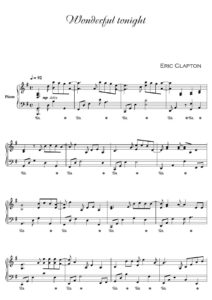 |
|
| Eric Dolphy Far Cry sheet music transcription |
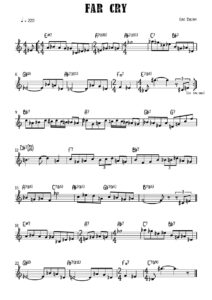 |
|
| Eric Dolphy God Bless the Child (clarinet solo transcription) |
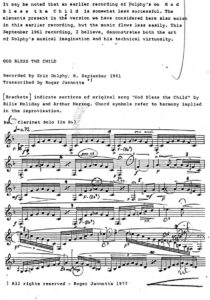 |
|
| Eric Dolphy On Green Dolphin Street sheet music transcription |
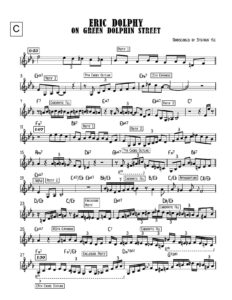 |
|
| Eric Idle – Always Look On The Bright Side Of Life | ||
| Eric Idle (Monty Python) Always Look On The Bright Side Of Life (piano vocal guitar chords) |
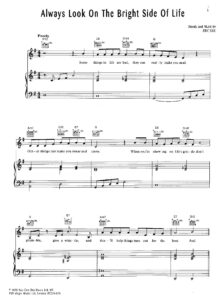 |
|
| Eric Johnson – Tones (Eric Johnson) Guitar Tablature |
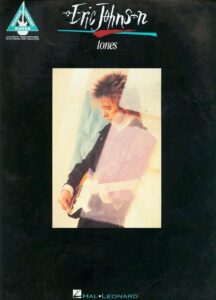 |
Eric Johnson – Tones (Eric Johnson) Guitar Tablature |
| Eric Johnson Ah Via Musicom (Eric Johnson) Guitar Tablature |
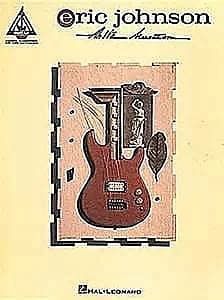 |
Eric Johnson Ah Via Musicom (Eric Johnson) Guitar Tablature |
| Eric Johnson Guitar Transcriptions with Tablature |
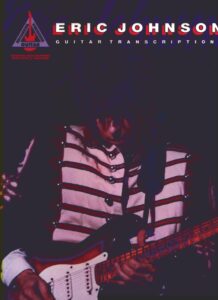 |
Eric Johnson Guitar Transcriptions |
| Eric Paschal Steve Trovato Contemporary Acoustic Guitar Book + Audio Mp3 Tracks To Play Along |
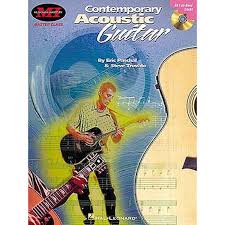 |
|
| Eric Taylor – La Teoria Musical en la Practica, grado 1 (Spanish-Español) |
 |
|
| Erik Lagerström Ere Zij God |
 |
|
| Erik Satie – Pièces Froides Danses De Travers No. 2 (Cold Pieces) (Partition Sheet Music) (Musescore File).mscz | ||
| Erik Satie Gymnopedie 1 Arranged for guitar with TAB.mscz | ||
| Ernest In Love The Musical Piano Vocal Score by Anne Crosswell and Lee Pockriss | Ernest In Love The Musical Piano Vocal Score by Anne Crosswell and Lee Pockriss | |
| Ernesto Lecuona 44 Piano Pieces | ||
| Ernesto Lecuona Piano Music Sheet Music |
 |
Ernesto Lecuona Piano Music Sheet Music |
| Ernesto Lecuona songs sheet music collection songbook |
 |
Ernesto Lecuona songs sheet music collection songbook |
| Ernesto Nazareth – Confidencias Valsa (Piano solo sheet music, partitura) |
 |
|
| Ernesto Nazareth A Collection Of His Finest Piano Works |
 |
Ernesto Nazareth A Collection Of His Finest Piano Works |
| Eros Ramazzotti Songbook anthology |
 |
Eros Ramazzotti Songbook anthology |
| Eros Ramazzotti Successi – Songbook |
 |
Eros Ramazzotti Successi – Songbook |
| Errol Garner – Errolls Bounce Sheet Music |
 |
|
| Erroll Garner Chopin Impressions Sheet Music Transcription |
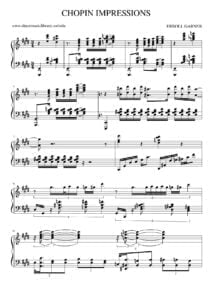 |
|
| Erroll Garner – Erroll Garner By Mimi Clar The Jazz Review January 1959 (Book) |
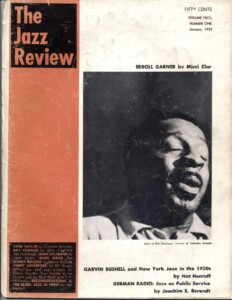 |
|
| Erroll Garner – Misty |
 |
|
| Erroll Garner – Misty (Guitar & TAB Solo Arrangement) | Erroll Garner – Misty (Guitar Solo Arrangement) | |
| Erroll Garner – Misty (Guitar Solo Arrangement) (Musescore File).mscz | ||
| Erroll Garner Concert By The Sea Artist Transcriptions For Piano |
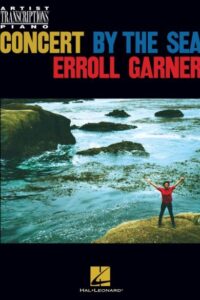 |
|
| Erroll Garner Five Piano Solos |
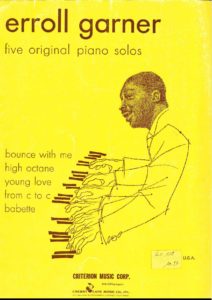 |
erroll garner five piano solos |
| Erroll Garner Misty Jazz Standard arr. Carsten Gerlitz |
 |
|
| Erroll Garner Misty sheet music Transcription |
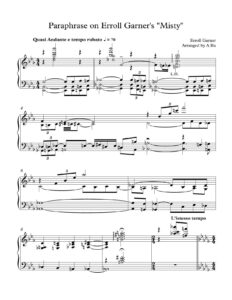 |
|
| Erroll Garner Piano Solos Book 2 |
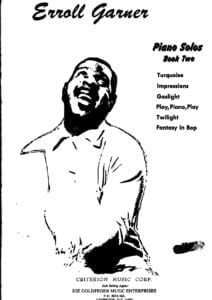 |
erroll garner piano solos book |
| Erroll Garner Songbook Vol 1 |
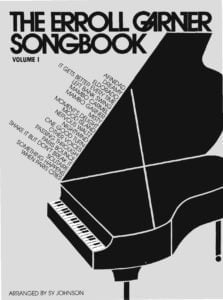 |
erroll garner songbook 1 |
| Erroll Garner Songbook Vol 2 |
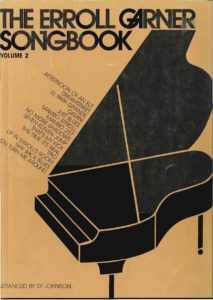 |
erroll garner songbook 2 |
| Esenvalds Eriks The Heavens’ Flock |
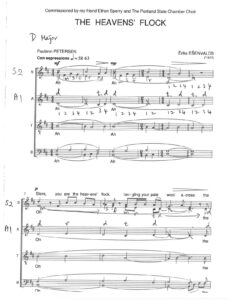 |
|
| Esenvalds, Eriks In Paradisum for Mixed Choir |
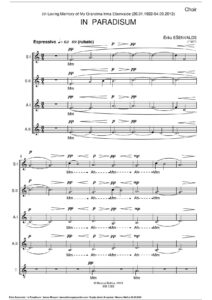 |
|
| Essays For Piano Original Compositions For Intermediate Contemporary Classical Piano by J.R. Marc Lauzon |
 |
|
| Essential Blues Guitar by Dave Celentano |
 |
|
| Essential Dictionary Of Music Notation (Theory) |
 |
|
| Essential Elements Ukulele Book 1 Standard Notation |
 |
|
| Essential film themes vol 3 |
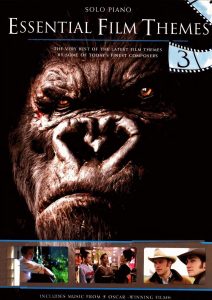 |
Essential 3 |
| Essential film themes vol 4 |
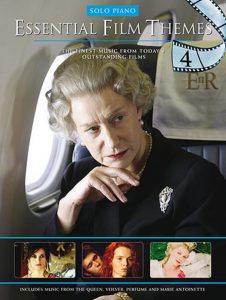 |
Essential 4 |
| Essential film themes vol 5 |
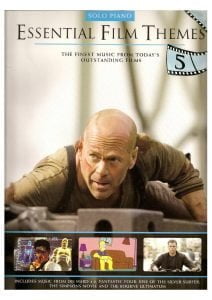 |
Essential 5 |
| Essential film themes vol 6 |
 |
Essential 6 |
| Essential Film Themes Vol. 1 |
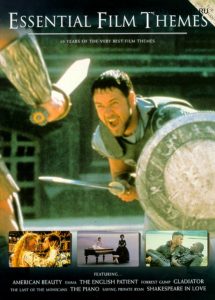 |
Essential 1 |
| Essential Film Themes vol. 2 |
 |
Essential 2 |
| Essential Jazz Lines In The Style Of Bill Evans (Guitar with TAB) |
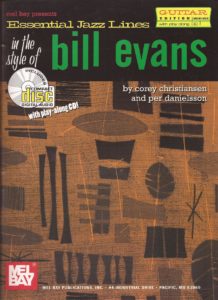 |
Essential Jazz Lines In The Style Of Bill Evans (Guitar) |
| Essential Jazz Lines in the Style of Charlie Parker (Guitar book with TAB) |
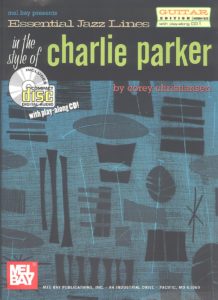 |
Essential Jazz Lines in the Style of Charlie Parker |
| Essential Jazz Piano Phrases |
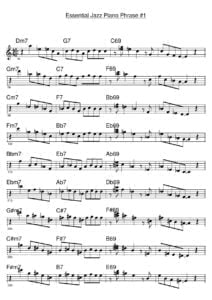 |
|
| Essential Keyboard Repertoire vol. 2 Barroque to Modern |
 |
Essential Keyboard Repertoire vol. 2 |
| Essential Keyboard Repertoire vol. 4 Barroque to Modern |
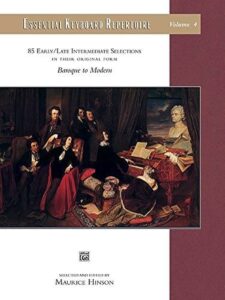 |
Essential Keyboard Repertoire vol. 4 Barroque to Modern by Morise Hinson 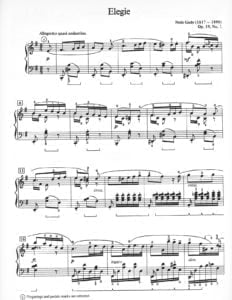 |
| Essential Piano Repertoire 1 Keith Snell |
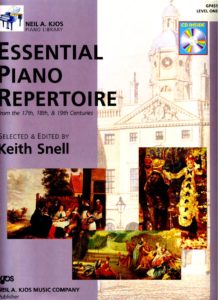 |
Essential Piano Repertoire 1 Keith Snell |
| Essential Piano Repertoire Level 2 (from 17th, 18th and 19th Cent.) by Keith Snell |
 |
Essential Piano Repertoire Level 2 (from 17th, 18th and 19th Cent.) by Keith Snell |
